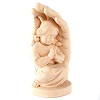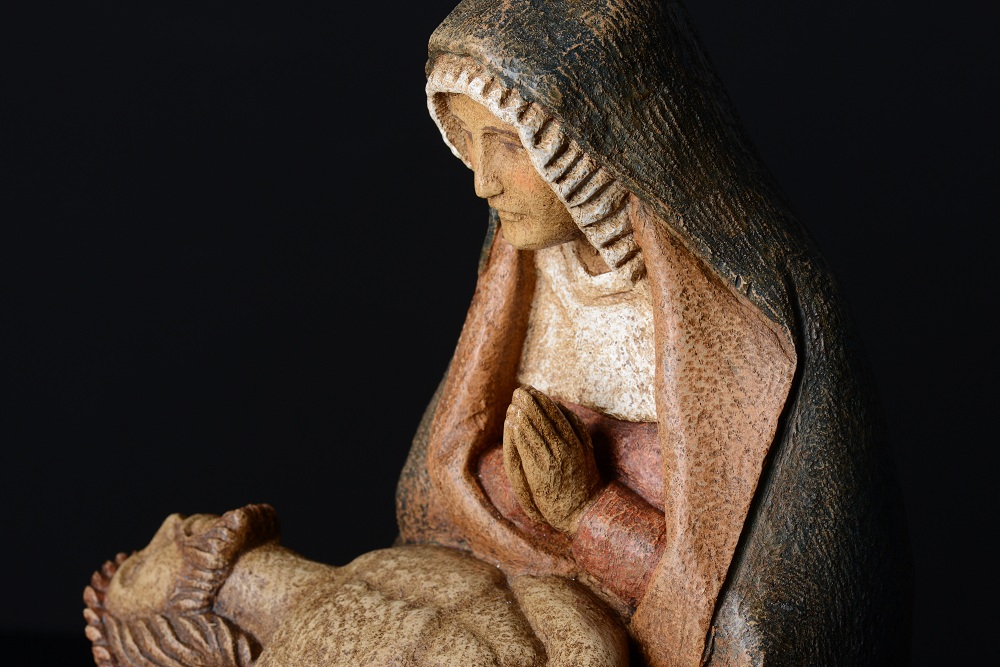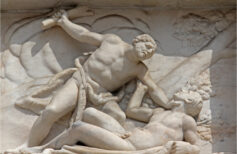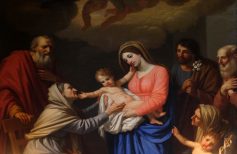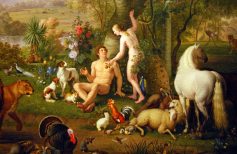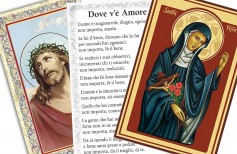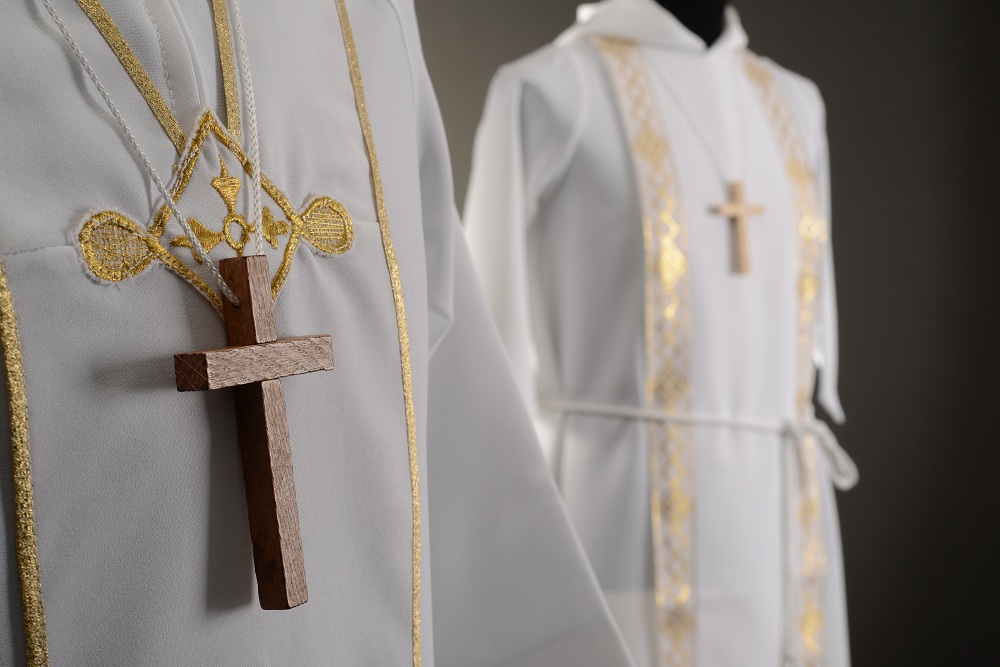The stories of the Bible are so many, and so compelling that over the centuries they have inspired countless artists and writers, up to modern directors who have made films and television series. Let’s find out the reasons for so much influence.
Contents
The stories of the Bible have been a constant in human history since immemorial time. It is not difficult to imagine why. The Holy Bible is the most widely read book in the world. It was the first book printed in Europe, after Johannes Gutenberg invented the movable type technique in 1455. But even before this happened, the stories of the Bible circulated throughout the known world, initially in the form of oral tales, transmitted from narrator to narrator, then in scrolls and manuscripts written by scribes and chroniclers of every country and nationality.
For this reason it is still difficult to identify an exact dating of the Bible. Certainly between the Old and New Testaments we speak in terms of thousands of years.
It is also difficult to determine exactly how many copies have been printed and sold, especially in view of the fact that there are different versions, coming from translations, and codes of different origin. An indicative estimate speaks of more than five billion Bibles sold, but it is a figure to be taken summarily.
Another information that gives us the measure of the success, and spread of the Bible in the world is the fact that it has been translated, in whole or in part, into more than 2,400 languages. This means that the stories of the Bible are accessible in part or in full to more than 90 percent of the planet’s inhabitants.
These data are sufficient to understand how great the influence of Bible stories may have been in art, literature, music, and once in the modern world, also in cinema and television. In fact, there are many films about the Bible.
It should be added that many of the stories in the Bible are truly compelling, sometimes even more so than many adventure novels or fantasy sagas that are trendy today. There is an abundance of violent and bloody events, murders, massacres, revenges, and wars, but even these dramatic events are important because on the one hand they demonstrate the truthfulness and historical accuracy with which the biblical writers wanted to write their testimonies; on the other hand they remind us how the Bible speaks of true men and women, and as such fallible, constantly exposed to temptation and sin. This means that we can appreciate even more those among them who have been able to stand up as examples of righteousness, wisdom, goodness.
Let’s see some of the stories of the Bible and their extraordinary protagonists.
Jacob
Of Jacob, Third Patriarch of Judaism after Abraham and Isaac, we read the story in Genesis. He was the son of Isaac and of Rebekah, twin brother of Esau, who was born before him, but from whom Jacob took the birthright, because at the moment of childbirth he held his heel with his hand. For this reason he was given this name, which derives from aqeb, “heel”. Then, Jacob also took from his brother the blessing of his father Isaac by deception. Esau sold it to him in exchange for a plate of lentils. In those days that meant getting full powers from the father over men, animals and everything that belonged to the tribe. It is not a case that the name Jacob also means “the supplanter”.
Jacob is also known by the name “Israel”, from the root shr, “to fight,” and El, “Lord.” “You will no longer call yourself Jacob, but Israel, because you fought with God and with men, and you won” (Genesis 32,29).

The differences between Judaism and Christianity
What are the differences between Judaism and Christianity? Is the God of the Jews the same as the Christians?
The verse and the nickname derive from an emblematic episode of the life of Jacob, who one night engaged in a merciless fight against an unknown man, probably an Angel of the Lord. As dawn approached, and after he had almost crippled him by hitting him on the sciatic nerve, the stranger begged Jacob to let him go. He consented, but sensing the supernatural origin in his adversary, he wanted his blessing in return, and it was then that man gave him the name Israel. The name is prophetic, for the twelve sons which Jacob had from his lawful wives, and from two slaves, gave birth to the twelve tribes of Israel.
Jacob’s characteristics were therefore cunning and strength, considered by the people of Israel precious and enviable gifts. Accustomed to fighting against men, his brother first, to get what he wants, Jacob does not hesitate to use cunning and deception to pursue the goals he sets for himself, and refuses to be bent by the events. Even his struggle against God is actually a sign of greatness: realizing against who he is fighting, Jacob lays down his pride and invokes the blessing of his adversary, who in return chooses him as the head of the people of Israel.
Jacob is venerated by the Catholic Church on December 24, along with the other patriarchs of the Old Testament.
Jacob had many children, among whom Joseph was his favorite.
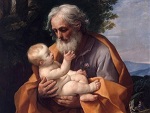
St. Joseph: the supposed father of Jesus
St. Joseph is a very beloved figure venerated by Christians and with affection and incomparable devotion.
Joseph and his brothers
The story of Joseph, who became Pharaoh’s minister and vice-king of Egypt after being sold to slave traders by his brothers, who were envious of the favor that his father Jacob granted him, has always inspired many writers and artists. There are films dedicated to him, including one of animation, Joseph the King of Dreams, made by Dreamworks, which has had a planetary success and is highly appreciated by children as well. The coat with many colors that Jacob wanted to give to his favorite son also inspired a musical, Joseph and the amazing technicolor dreamcoat, created by Andrew Lloyd Webber and Tim Rice.
Beyond his recent fame, Joseph is also an Old Testament patriarch, and from his sons Manasseh and Ephraim descend two of the tribes of Israel. After being sold by the envious brothers, he used his ability to interpret dreams to become minister and advisor to the pharaoh. He interpreted for the latter the famous dream of fat cows and thin cows, and thus managed to save all of Egypt, and also his father Jacob and the tribes of Israel from a terrible famine that lasted for seven years.
Samson and Delilah
The story of Samson and Delilah, in addition to paintings, literary and musical works, has also been the inspiration for many films, thanks mainly to the amorous and tragic component that it provides.
Samson was a judge who had received supernatural powers as a gift from God. His name derives from Shimshon, “little sun”, and this made him think for some time that he himself could be a sort of demigod. His birth had been announced by an angel who had revealed to his mother that once he grew up, her child would free Israel from the invading Philistines, and had advised her never to cut his hair.

Way of the Cross for children: how to tell your child about the 14 stations
It is not easy to explain certain things to a child. Not even for modern children…
In the Latin Christian tradition Samson took on traits in common with Hercules, although in him physical strength always joined the spiritual gifts, creating an archetype of the Christian hero who sacrifices himself. In fact, even the adventures that Samson faces during his life, are a bit reminiscent of the labors of Hercules. He often clashes with the Philistines, becoming a real thorn in their side.
When Samson falls in love with Delilah, the Philistines offer her much gold in exchange for her help in capturing Samson. The woman goes to great lengths to discover the secret of his prodigious strength, and after many failed attempts, eventually manages to get the hero to confess that it resides in his hair. She makes him shave, and hands him over to the Philistines, who chain him up and imprison him, after blinding him. Later, they pick him up from the prison for a solemn ceremony, but his hair has grown back, and though blind, Samson manages to bring the building down by pushing the load-bearing columns, shouting “Death to Samson and all the Philistines!”
Queen Esther
His name in Hebrew means “I will hide”. Esther, who was actually called Hadasah, “myrtle”, takes this name to hide her Jewish origin when she enters the harem of King Ahasuerus as his wife.
Only later she will reveal her true identity to save the Jews from the massacre ordered by Prime Minister Aman. Upon hearing the minister’s plan, she fasted for three days, then presented herself to the king and asked him to go to dinner with Aman. In front of everyone, she revealed her Jewish origin, and said that Aman wanted the death of all Jews.
With her courage she convinced the king to intercede for her people. Thus the holiday of Purimwas was born, celebrated even today on March 14 and 15.

Bile Stories for children
Even children can appreciate many of the stories of the Bible. Obviously, we need to approach them in the right way, adapting stories, and characters to their age and sensitivity. There are many books written specifically to bring children closer to Christianity through the telling of stories from the Bible.
If we want to offer children the stories of the Bible for children, we can begin with stories that are easy to tell even the youngest, such as the three parables of mercy. The story of the lost sheep (Luke 15:1-7) or of the lost coin (Luke 15:1-10), or the prodigal son (Luke 15:11-32) are suitable to be told even to very young children, and teach them the importance of repentance, and especially the immense love of God, willing to welcome us back, and love us despite our mistakes.
Remaining within the context of the parables, the parable of the Good Samaritan (Luke 10,25-37) can also help children to understand the message of Jesus, to love our neighbor as ourselves. The parable of the vine and the branches (John 15,1-11) will teach them that alone we are nothing, like a vine shoot detached from the plant, and not cared for by the farmer (God), destined to dry and be burned. Only by remaining with God can we bear fruit. The parable of the talents (Matthew 25,14-30) shows children how God grants us all spiritual gifts, that each of us must put to good use, otherwise they are useless.
Also, the parable of the sower (Matthew 13:3-8;19-23) shows how everyone can receive the Word of God, telling what happens to different seeds that fall on the road, among the stones, among the thorns, and finally in the good soil, where they can bear much more fruit.
The parable of the Pharisee and the tax collector (Luke 18,9-14) finally teaches the value of humility.
